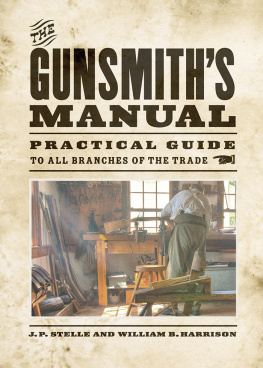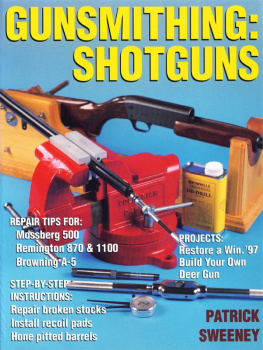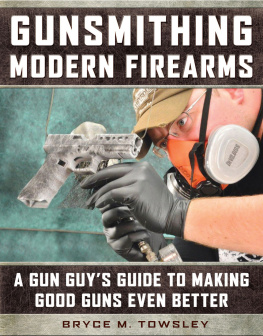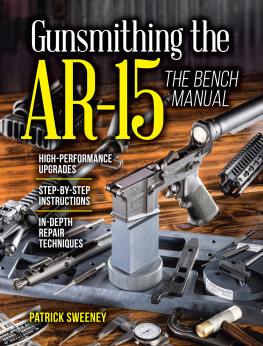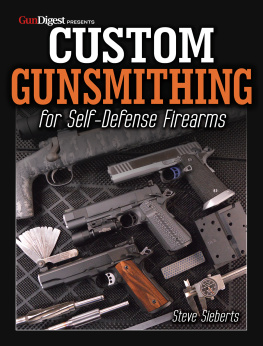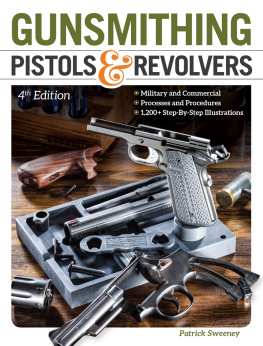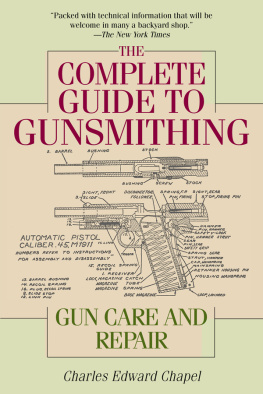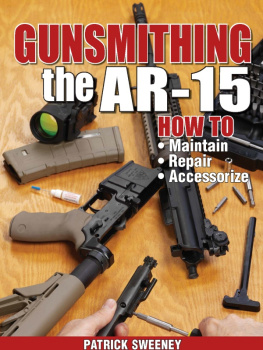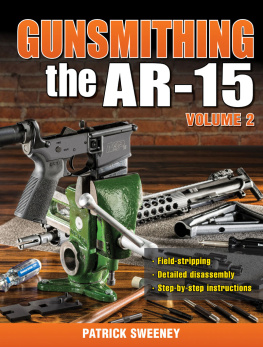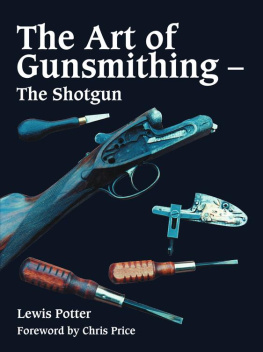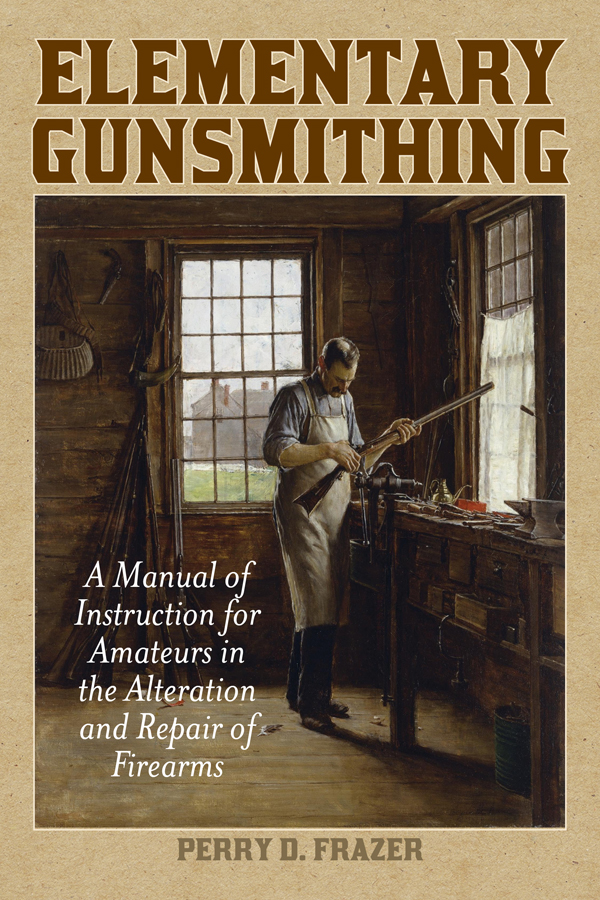
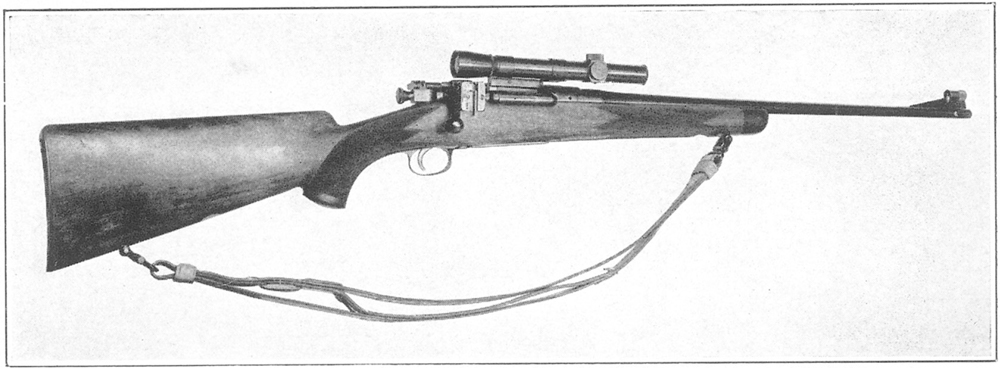
A sporting Springfield .30 06 fitted with modern telescopic sight and restocked by the owner to suit his own ideas. A first-class job in every respect, yet there are hundreds of self-taught amateurs who can do equally well at such custom gunsmithing .
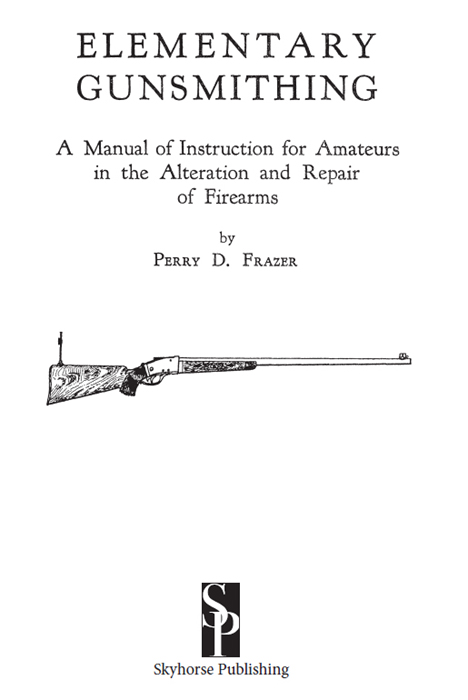
Copyright 1938 by Thomas G. Samworth
Special contents copyright 2008 by Palladium Press
F IRST S KYHORSE P UBLISHING E DITION 2015
All rights to any and all materials in copyright owned by the publisher are strictly reserved by the publisher. No part of this book may be reproduced in any manner without the express written consent of the publisher, except in the case of brief excerpts in critical reviews or articles. All inquiries should be addressed to Skyhorse Publishing, 307 West 36th Street, 11th Floor, New York, NY 10018.
Skyhorse Publishing books may be purchased in bulk at special discounts for sales promotion, corporate gifts, fund-raising, or educational purposes. Special editions can also be created to specifications. For details, contact the Special Sales Department, Skyhorse Publishing, 307 West 36th Street, 11th Floor, New York, NY 10018 or info@skyhorsepublishing.com.
Skyhorse and Skyhorse Publishing are registered trademarks of Skyhorse Publishing, Inc., a Delaware corporation.
Visit our website at www.skyhorsepublishing.com.
10 9 8 7 6 5 4 3 2 1
Library of Congress Cataloging-in-Publication Data is available on file.
Cover design by Richard Rossiter
Print ISBN: 978-1-62914-439-9
Ebook ISBN: 978-1-62914-932-5
Printed in the United States of America
EDITORS NOTE

PERRY D. FRAZERS
ELEMENTARY GUNSMITHING

by Dr. Jim Casada
In the years from 1926 to 1954, Thomas Garvine Samworths Small-Arms Technical Publishing Company produced a total of forty-three books by thirty-one different authors. The press also published four booklets and two prints. One of the full-length works was a two-volume effort (Townsend Whelens Small Arms Design and Ballistics) , and three were reprints (Arthur C. Goulds Modern American Pistols and Revolvers and Modern American Rifles , along with The Gunsmiths Manual by J.P. Stelle and William B. Harrison). This is an impressive record for what was always a one-man operation, with Samworth doing all the editing, arranging for the works to be printed, handling sales and distribution, and keeping track of royalties.
Even more impressive is the fact that Samworth managedby dint of his character, production of good books, forthright honesty, and exceptional knowledge of the subject matter coveredto cultivate an extraordinary stable of authors. Names such as Townsend Whelen, Elmer Keith, John Pondoro Taylor, E. C. Crossman, Henry Edwards Davis, and C. S. Landis remain standards, despite the passage of more than half a century, in their various fields of writing.
Perry D. Frazer was not nearly so well known, at least in literary circles, as the aforementioned authors. Yet from the standpoint of useful knowledge, it would have been difficult to find someone more suitable to write the book being reprinted here, Elementary Gunsmithing . Samworths promotional material for the volume went to the heart of the matter: Who is better qualified to guide the beginner into the intricacies of guncraftsmanship than a professional gunsmith with more than 50 years practical experience at the workbench? Yep, we think so too, and Perry D. Frazer turned out a masterful work on this most difficult subject.
It is likely that Samworth envisioned two types of audience for the book. His promotional leaflet mentions it as a first book buy for youngsters along with suggesting that the work would appeal to any person just becoming interested and enthused in firearms. Whether this interest is fired by the individual taking up the love of firearms as a hobby or whether he wishes to go a step farther and make it a part of full-time business, he can get a solid foundation of the fundamentals of gunsmithing in this volume. My personal observations of perhaps a score of copies of this book over the years suggest that Mr. Sam was eminently successful in his goal of making this a working title. Far more often than not the dust jacket is missing. Similarly, the first printing, with its pebble-grain leatherette, invariably shows cracking and flaking along the spine and hinge. This is less a product of fragility than of long and loving use.
The first printing of the first edition (1938) is readily distinguishable from a Samworth printing that took place in 1946. The binding of the 1946 printing is different, with dark blue buckram being used instead of leatherette, and the location for the Small-Arms Technical Publishing Company has been changed from Onslow County, North Carolina, to Plantersville, South Carolina. In addition to these two Samworth printings, the book was reprinted (as was the case with many Samworth titles) by the Stackpole Company. There were two Stackpole printings, in 1953 and again in 1958. This spread of four printings over the course of a full two decades attests to the books enduring appeal.
Other than the somewhat sketchy information available in Samworth promotionals, I have not been able to find much biographical data on Frazer. He contributed a single article, Scope Sight Target, to the February 1940 issue of The American Rifleman magazine , but no other evidence of literary endeavor has come to light. In all likelihood Samworth knew or knew of Frazer through his many contacts in the world of guns. Samworth had worked for several years as an editor with the National Rifle Association, and he carried on extensive correspondence with individuals interested in all aspects of gunshunting, precision shooting, ballistics, gunsmithing, and more. Another possibility is that one of the other gunsmithing writers in the Samworth stable brought Frazer to his attention. More than a dozen books bearing the Small-Arms Technical Publishing Company imprint dealt with some aspect of gunsmithing, and eventually four other volumesClyde Bakers Modern Gunsmithing , Roy F. Dunlaps Gunsmithing , Walter Howes Professional Gunsmithing , and W. F. Vickerys Advanced Gunsmithing would constitute what might at first glance seem to be directly competitive printings.
Such is not the case though. All of these gunsmithing works are more advanced, and at the time Elementary Gunsmithing first appeared, only Bakers Modern Gunsmithing was available. According to Brian Smith in his important reference work on the Samworth imprints, Samworth Books: A Descriptive Bibliography , the book was commissioned by Samworth to fill the vacancy in his product line for a low end inexpensive book on gunsmithing for the beginner. Published in 1938, just as the worst of the Great Depression was past, it cost only two dollars. The book includes plenty of diagrams and other illustrative material, and the intention of both the author and publisher was to offer a text that would allow someone with nothing more than ordinary hand tools to perform basic gunsmithing work.
Next page

